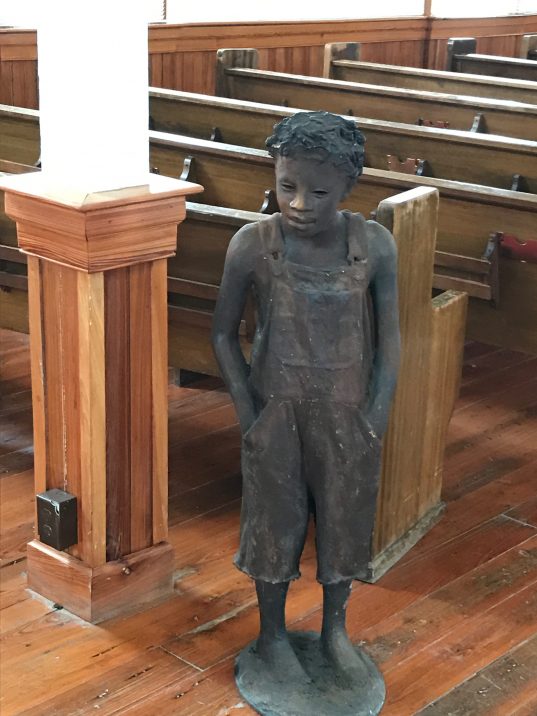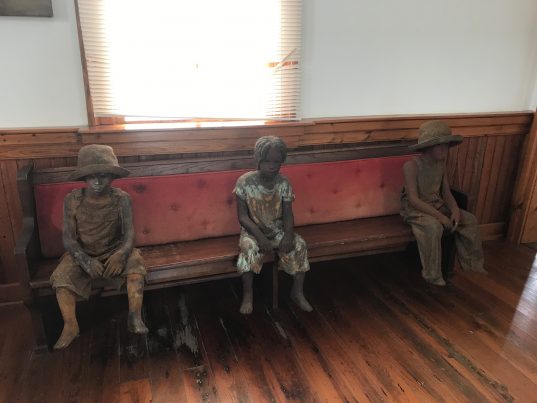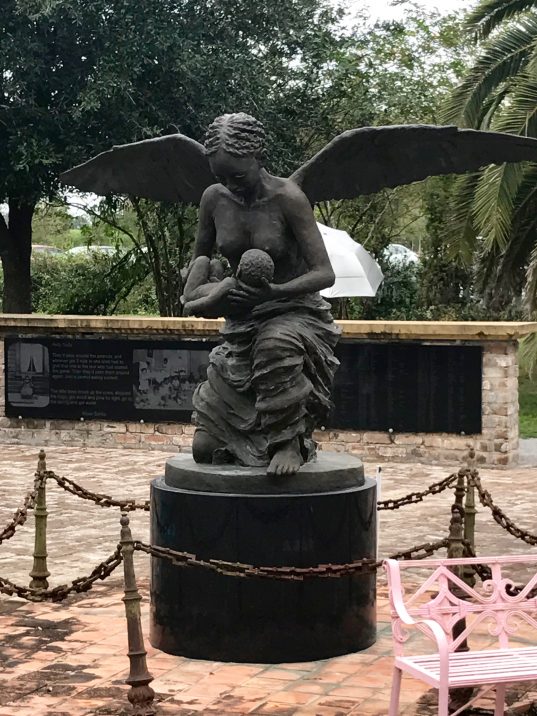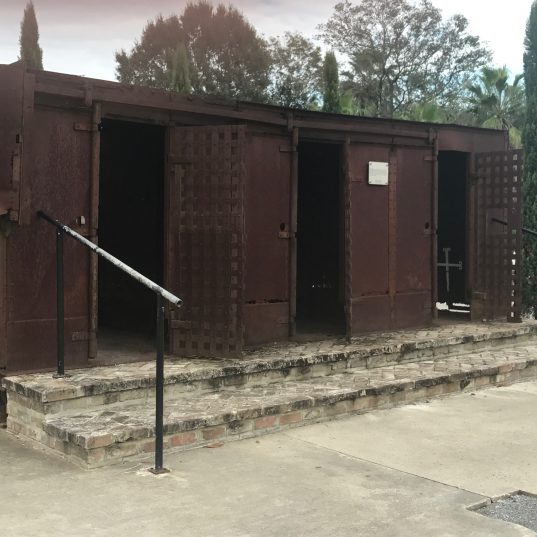Visiting the Whitney Plantation

A few years back, my cousin, Linda, and I visited Oak Alley Plantation, one of several plantations along the Mississippi’s River Road in southern Louisiana. I heard our tour guide utter a line there that I will never forget, as he spoke of the fortunes of the antebellum mansion during the Civil War. “We were forced into a war (the war between the States, he called it) we did not want,” he said.
I could hardly believe my ears. It was before I moved to the South to live, and was not quite aware of how alive the Civil War still is, and how, in many ways, the issues engendering the war are still being fought. Case in point: my visit occurred during the time that the man who shot Trayvon Martin, the first in a succession of highly publicized deaths of young black men – deaths illustrating how much the strange fruit of slavery is still with us – to follow over the next few years across American cities, was acquitted of all charges. I remember sitting in a coffee shop in Slidell, LA – a very red part of the state on the northshore of Lake Pontchartrain – the morning after the verdict was announced, eavesdropping on a conversation between older white haired ladies who kept asking “just what was he doing walking through there anyway?”.
Linda and I returned to River Road this past weekend to spend an aptly cloudy afternoon visiting the Whitney Plantation. This one is no Disneyland version of a plantation – complete with young women, even African descended young women, as we had seen at Oak Alley – wandering around in hoop-skirted crinoline and lace ball gowns.
On this tour, the blond 40-ish woman from New Orleans who guided us through the Whitney told us she had been so moved when she first came to visit the plantation, opened at the end of 2014, that she decided to return to work as a guide. She did not tell us much of business and ledgers, marriages and the joining of wealthy planter families, like we had heard at Oak Alley. Rather, we heard primarily of the lives of this plantation’s enslaved workers – particularly of the children, a theme that plays out all through the grounds of the historic place.

The Whitney Plantation, originally named Habitation Haydel – the Frenchified version of the German name Heidel, the name of its founding family, is not opulently decorated. In fact, it stood mostly unoccupied for over 20 years when John Cummings, a trial attorney, purchased it in 1999. The historic and intricate ceiling paintings had been covered with solid latex paint and had to be restored. And of course, the requisite graceful canopies of oak trees have been restored, but the bulk of restoration and decor at this plantation went to depicting slave life – to the haunting life-sized bronze statues of children who were born into slavery, scattered throughout the property, to the “Field of Angels” memorializing those children who died before reaching 3 years of age, and to plaques encased in granite walls naming the hundreds of slaves who lived and worked on the land, first cultivating indigo, and when that market collapsed, cultivating and manufacturing the deadly sugar crop. There are snippets of oral histories of surviving formerly enslaved people recorded as a project of the Federal Writers’ Project, a project of the Works Progress Administration – initiated by Franklin D. Roosevelt, inscribed on the granite walls.

Our guide opens by telling us of the “coffles” – trains of hundreds of African enslaved chained and herded together to walk to auctions across the vast region of the South. She points out the portable jails where the enslaved were held waiting to be sold. She tells us later that one of the mixed race offspring of the Haydel family became the original ancestor of the family that would produce New Orleans first African American mayor, Ernest “Dutch” Morial, and that later his son, Marc, would also become mayor of the city. I can hear the thinly veiled hope, pride and maybe caution, in her telling.

Her parting words to us “when someone says to you, why can’t these people just get over it, remember what you’ve seen here.”
5099 Highway 18; Wallace, LA 70049
225-265-3300
See what people are saying on Facebook:






